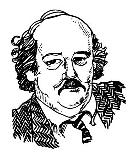(Syndicated to Kansas newspapers June 27, 2016)
 After a two-day special legislative session which adjourned in the dusk of Friday, we need to see just who won what, or at least who claims credit for what leading into the election season.
After a two-day special legislative session which adjourned in the dusk of Friday, we need to see just who won what, or at least who claims credit for what leading into the election season.
Did the Kansas Supreme Court win by using its power—essentially the threat to close schools—to force lawmakers to provide equal support for all school districts that have property tax-supported Local Option Budgets? Yes.
So, the court forced legislators to provide equal state support for school districts with those local option budgets by threatening to close schools. It cost about $38 million to provide that equal support and the majority of that money won’t be spent to hire teachers or buy textbooks or even purchase playground equipment, but will instead allow school districts to cut their property taxes for patrons or at least not increase them.
That’s not exactly like rescuing children from a burning barn, is it?
The concept, the state treating all districts equally, sounds good and makes sense, doesn’t it? It loses a little of that glow when most of the additional money spent will allow districts to lower property taxes, but well, this is government. Probably, we could stop a dab short of asserting that the court forced the Legislature to “save the children.”
But that school-closing threat clearly forced the Legislature’s hand, and those spooky black-robed justices loomed large during the session, extorting that $38 million that provides equal treatment of school districts from legislators and their constituents that probably the Legislature should have provided without the threat.
You probably want to stop a little short of saying that the court forced the Legislature to do the right thing and had to use the extraordinary school-closing threat to accomplish that goal. Not sure how far short of that point you want to stop, because it’s doubtful that without that threat, there wouldn’t have been a special session and equalizing what amounts to less than one percent of the total state aid to schools wouldn’t have been done.
Let’s wait a minute to see who takes credit for what.
Lawmakers prevented that school closing, or threat of school closing. How much credit do they get? Did they prevent the courts from closing schools, or did lawmakers—116-6 in the House and 38-1 in the Senate—just follow the constitution? We’ll see how they portray the effort, and we already have an idea how it may play out. If you put one less ice cube in your highball, can you claim that somehow you’ve saved a polar bear?
And the court can take credit—and maintain its assertion that it is ensuring even-handed constitutional treatment of public education—for forcing that change in school finance law that probably shouldn’t have ever been necessary if legislators had read the constitution. But, that’s a little like asserting that by not buying that Donald Trump tie, you’ve saved a panda somewhere in China next to the tie factory.
There’s little chance that descriptions of the special session, the wheedling about where the money comes from in the state budget for that $38 million fix to equalize support for those LOB districts, will come down to just abiding by the constitution which requires the state to make sure that with relatively equal local property tax effort, all children get access to relatively uniform educational opportunities.
And, don’t forget that the governor will claim credit for the fix, too. Because nobody isn’t for equal educational opportunity, and he was the one who thought up the idea of bringing the Legislature back to town Thursday for the special session, understanding that most legislators didn’t want to spend the weekend off the campaign trail—and unable to accept campaign contributions—for more than two days.
The winner? It’s probably up to voters to decide…
